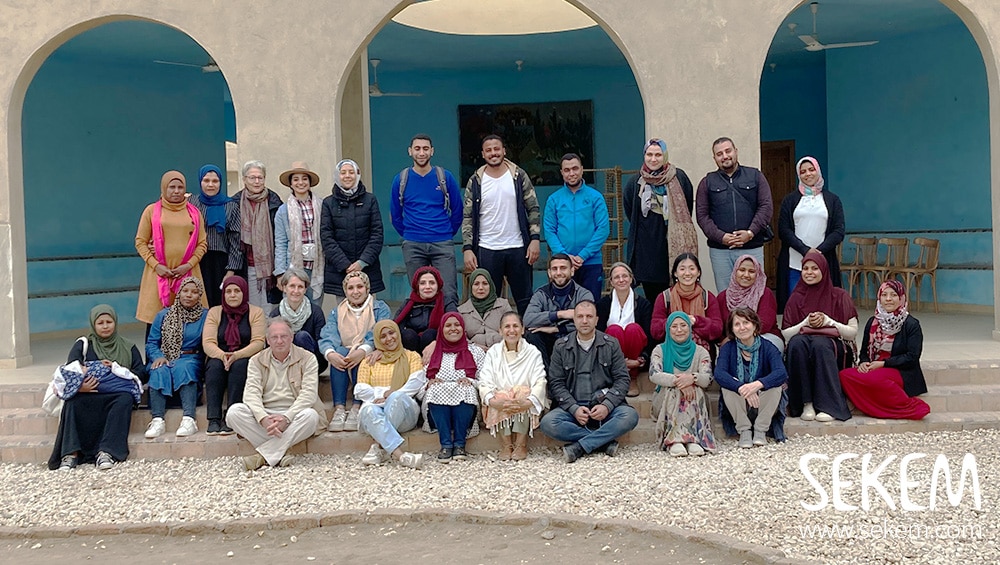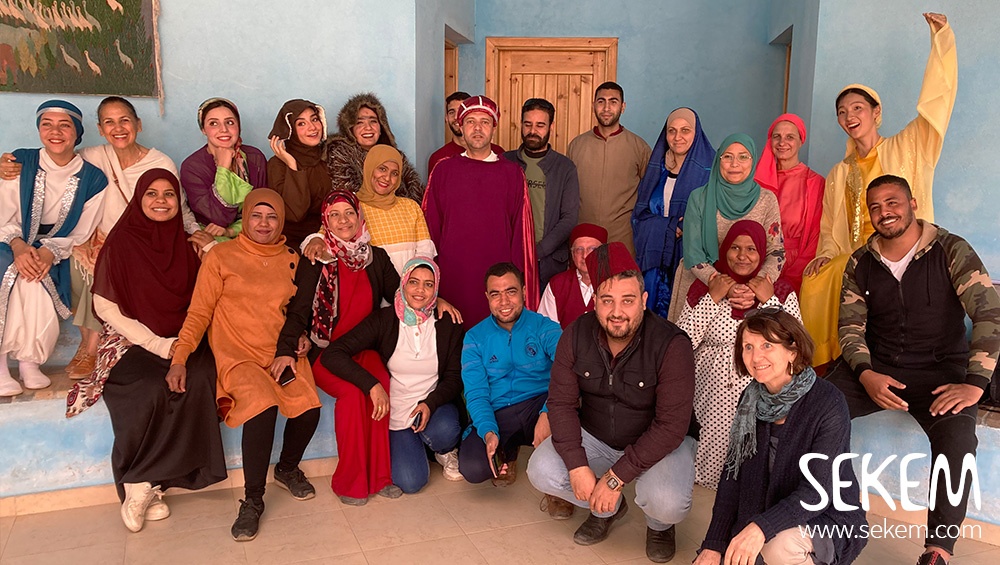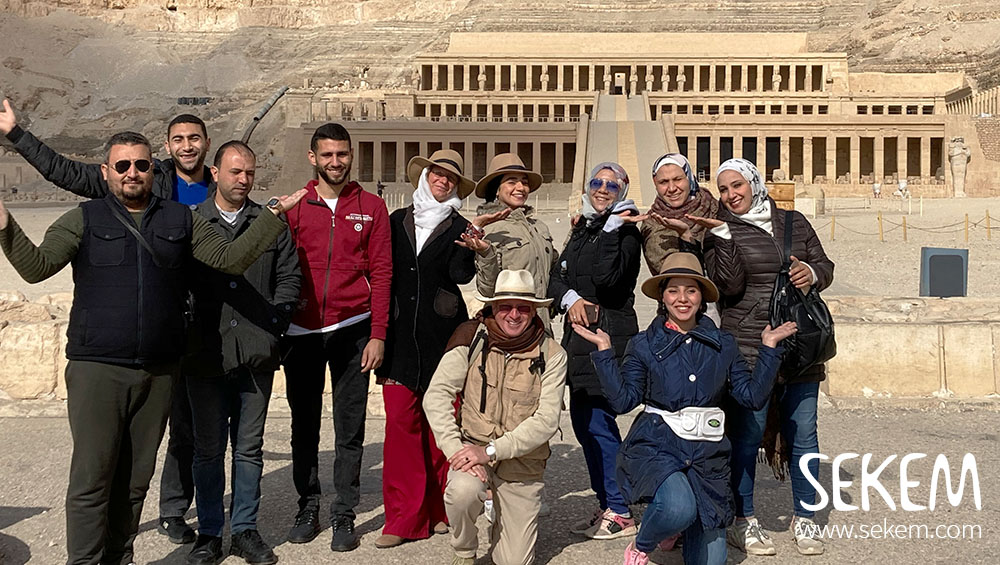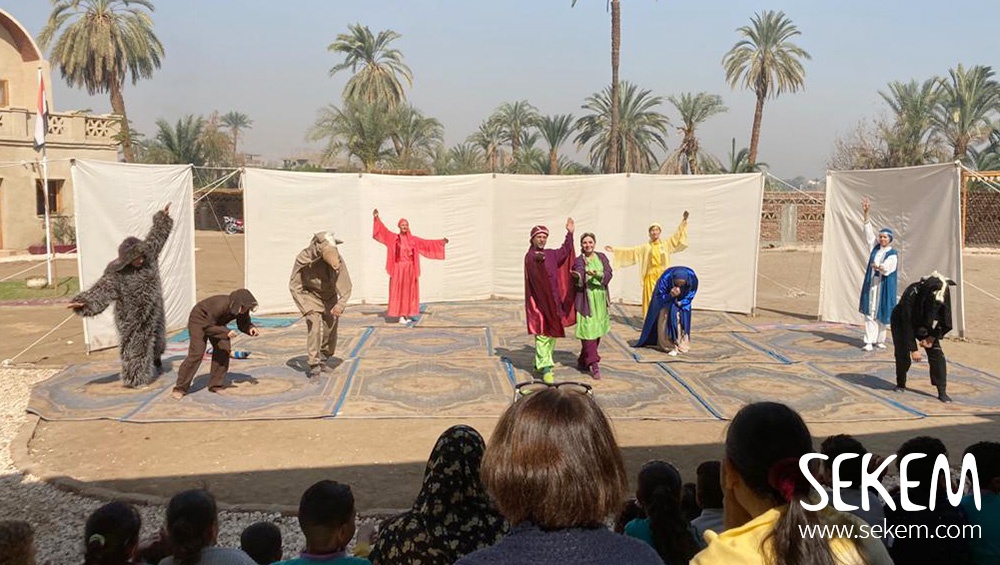A long-awaited dream recently came true for eurythmy teachers of the SEKEM School. For quite some time, all of them had cherished the wish to bring eurythmy to other places in Egypt. Now, just in these difficult times, the wish became reality: They went to the historic city of Luxor, a center of ancient Egypt, which still today mystically tells stories of thousands of years of history.
In Luxor, the new school “Hebet El Nil” (Gift of the Nile) was recently established. The educational institution, similar to the SEKEM school, wants to promote the individual potential enfolding of its students. With the oriental fairy tale “Gamil & Gamila” in their luggage – and that in the truest sense of the word because all costumes and the stage arrangement came along – 14 SEKEMers traveled from Cairo to the south of Egypt.

“We have been in intensive exchange with our colleagues since the founding of the school in Luxor and we feel a sisterly bond,” reports Martina Dinkel, the long-time SEKEM eurythmist and coordinator. “Two special schools in Egypt, one in Lower Egypt and one in Upper Egypt, seem to us like a continuation of ancient Egyptian culture. Back then, it was always about the balance between the two realms.” And it should still be like this today.

The guests from SEKEM not only performed the play, but also participated in the development of eurythmy and physical education classes. “The ‘Hebet El Nil’ college welcomed us very warmly, as if we were part of the family,” Martina Dinkel is pleased to say. And her colleague Shaimaa adds: “Performing and teaching eurythmy in a different environment demands flexibility. And responding to the students required special empathy and adaptability.”

At the end of the trip, the SEKEM eurythmy team also had the opportunity to visit some ancient Egyptian cultural sites. “It was a special experience to discover them through ‘eurythmy eyes’. The wall paintings, for example, also reveal some of the origins of eurythmy,” says Martina Dinkel “and it’s wonderful that the teachers can now incorporate these experiences into their daily lives as a living experience.”

